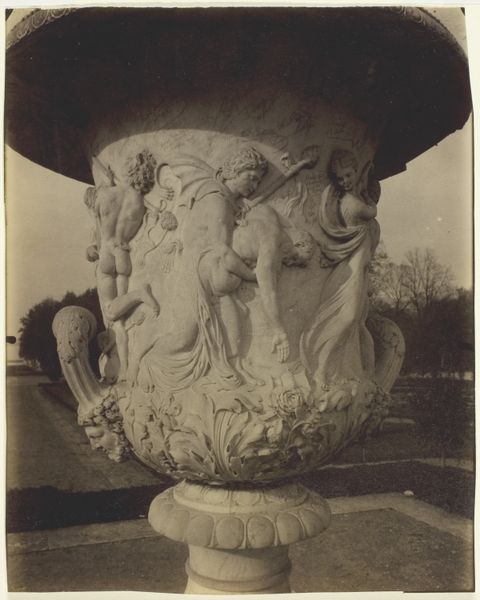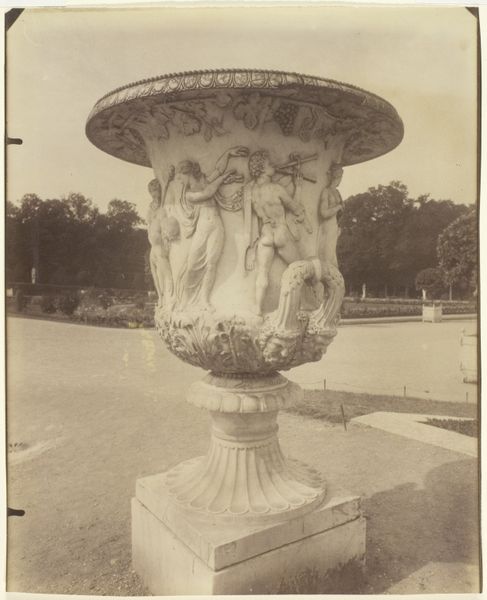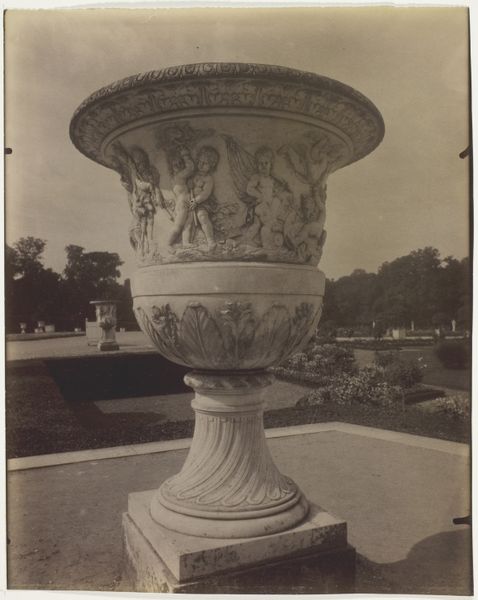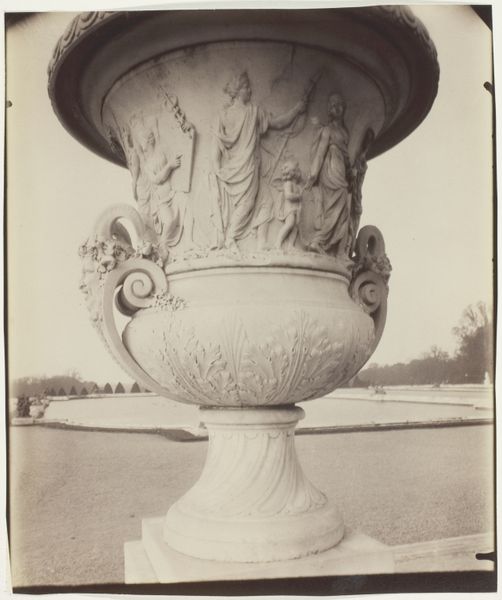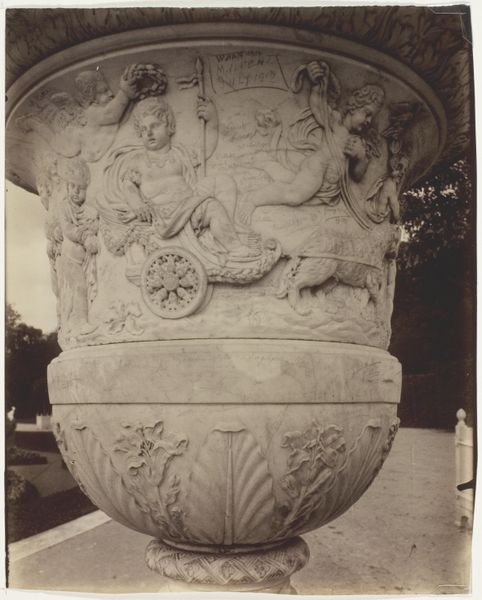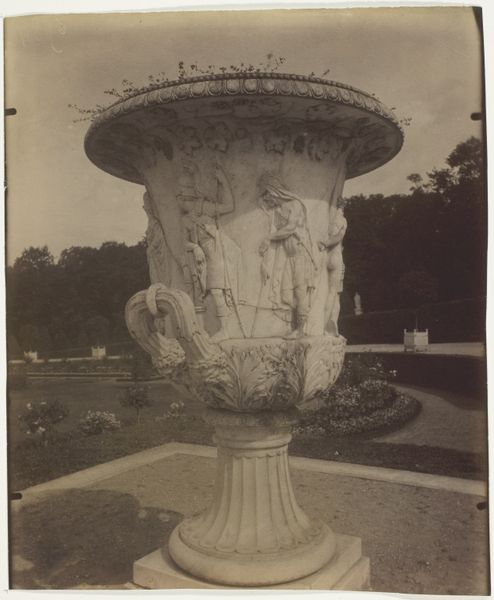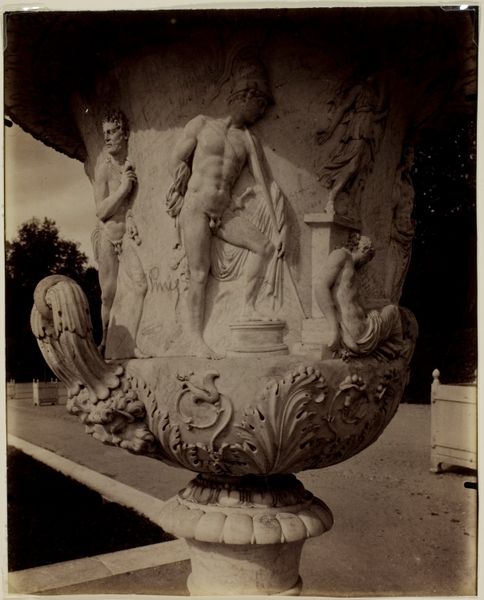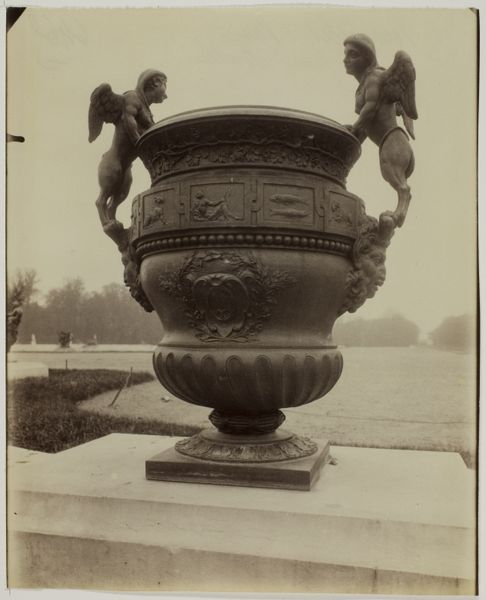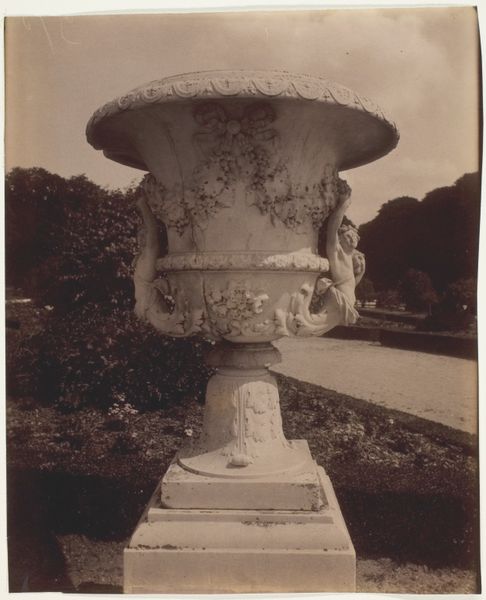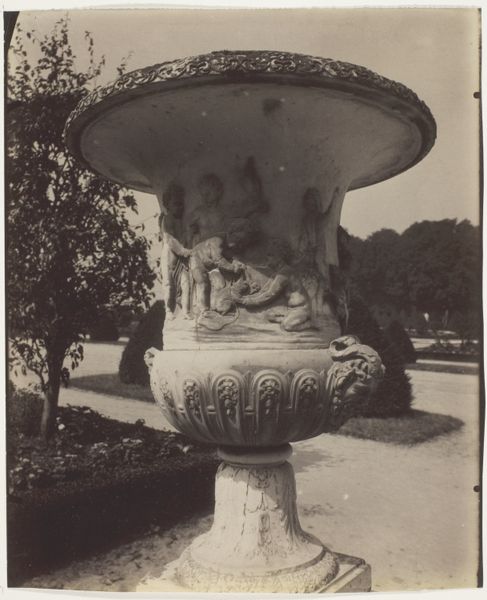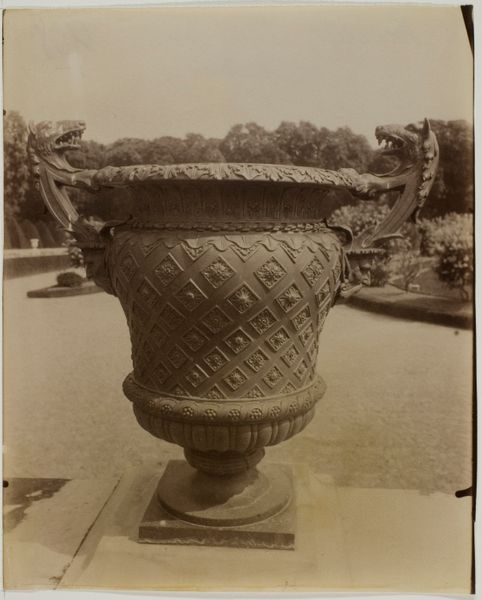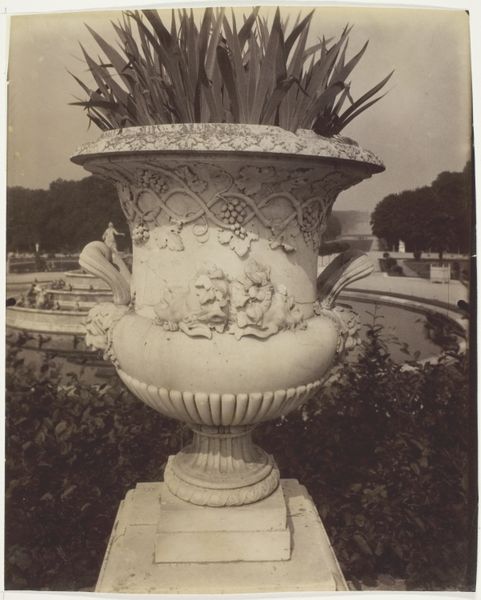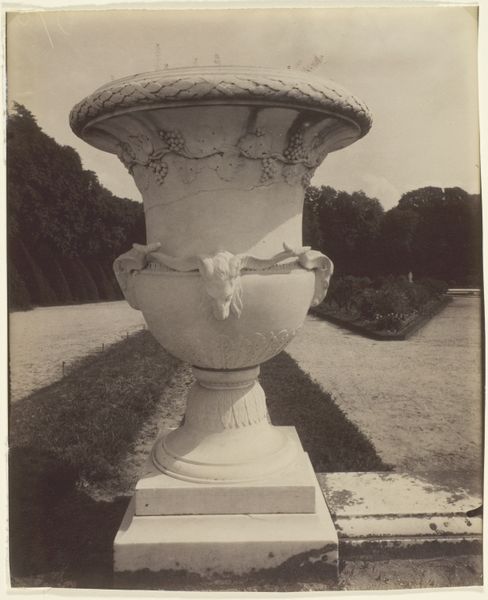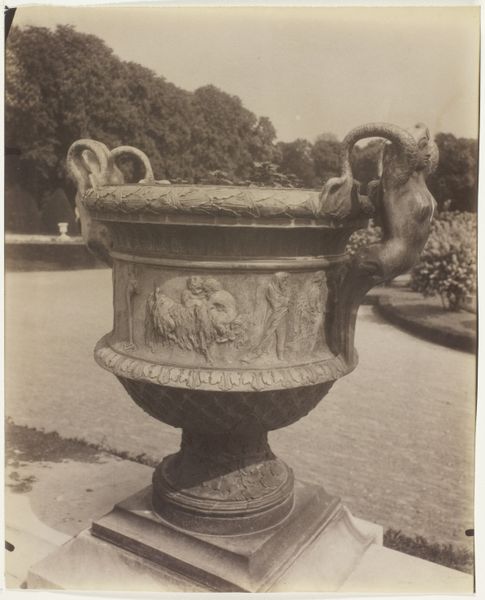
silver, print, photography, sculpture
#
silver
# print
#
sculpture
#
landscape
#
photography
#
sculpture
#
france
#
men
#
cityscape
Dimensions: 21.5 × 17.8 cm (image); 21.6 × 17.8 cm (paper)
Copyright: Public Domain
Curator: Eugène Atget captured this photograph, titled "Versailles, Vase par Cornu," around 1904. It’s currently part of the Art Institute of Chicago’s collection and rendered in silver. What's your initial take? Editor: Monumental! Even in this monochromatic rendering, the vase exudes a kind of somber power. I'm immediately drawn to the figures carved into its surface; they seem to carry such a weight. Curator: Atget's eye really focuses on the material reality here. You can almost feel the weight of the stone, see the precise chiseling marks left by the artisan. Cornu's labor becomes almost tangible through the sharp contrasts. Editor: Absolutely. I keep coming back to the veiled figure; there’s something profoundly mournful in her posture. She’s juxtaposed with figures in classical poses, suggesting an intersection of different emotional states and maybe social structures too. There is also some form of fracture cutting down right by that figure... fascinating to read the history in the details of such damage. Curator: It does prompt reflection on value: on what endures and what doesn't. Consider the political dimension; Versailles was, and is, heavily burdened with socio-economic power dynamics and their influence on access. Atget’s choices in capturing this subject reveal a critical engagement with those questions through documentation. Editor: That rings true, considering Versailles as a symbol. Vases, too, carry symbolism—they represent containment, rituals, often funerary associations. And the men in the vase: their arrangement, their placement…It reminds me a bit about classic friezes of Greek tragedies... Curator: Placing a specific worker against those ideals! That act disrupts the notion of timeless beauty that classicism often evokes. By foregrounding the craftsmanship, he challenges viewers to acknowledge the economic forces, which determine what's deemed "art" versus "craft," worthy of preservation. Editor: It makes you wonder about the intent behind capturing that vase specifically. Why this particular vessel in Versailles? I suppose Atget wanted to reveal stories about beauty and tragedy that continue, both on a public and personal level. Curator: Ultimately, through Atget's lens, this vase doesn't merely become a symbol of French grandeur or artistry; instead, it represents both a monumental achievement and also all the economic forces which went into this product's creation. Editor: And for me, I now wonder about all the tales those stone figures could tell and the artist’s choice of conveying this juxtaposition in his work and photography, especially by featuring common tragic iconic structures that still reflect today’s issues.
Comments
No comments
Be the first to comment and join the conversation on the ultimate creative platform.
